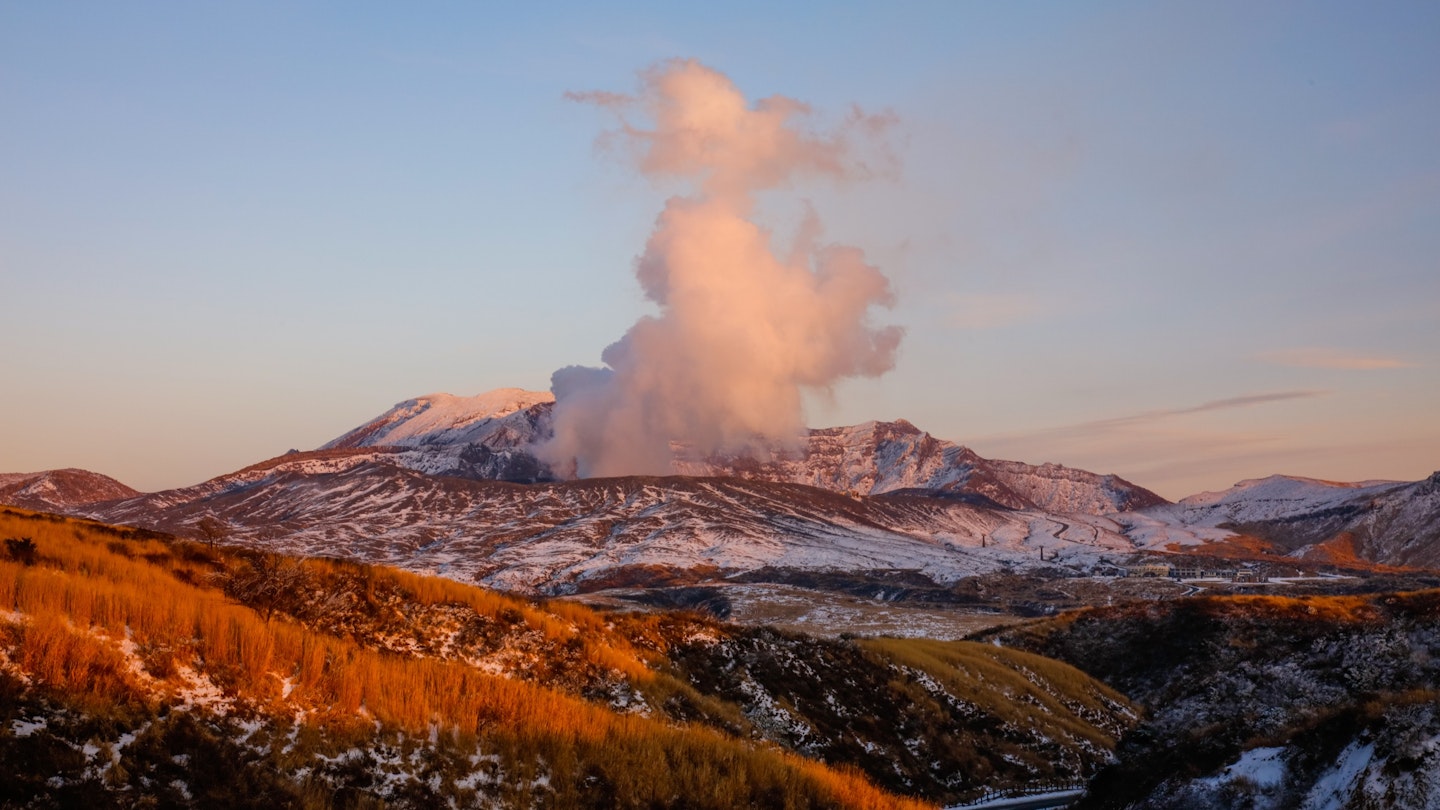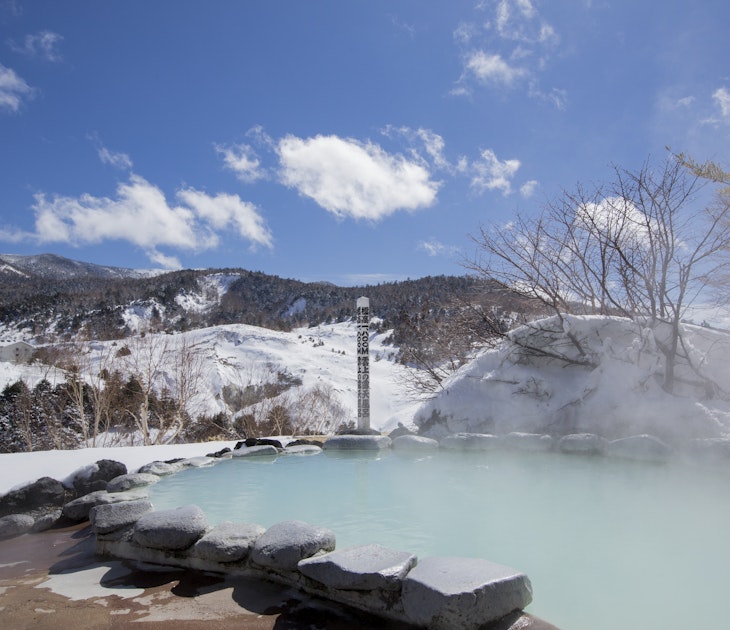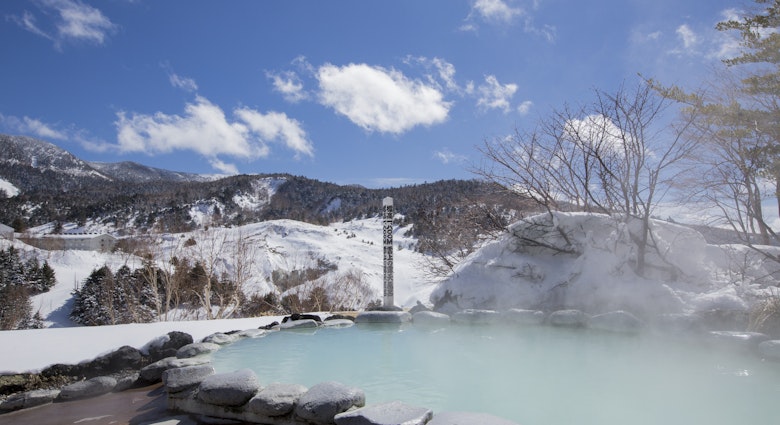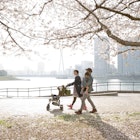Mt. Aso, the name given to a collection of volcanic peaks in the center of Kyushu, the southern-most of Japan’s four main islands, is Japan’s most active volcano. It’s also one of the best places in Japan to experience the impact of fire and water on the landscape and the lives of the people who live here.
Fire
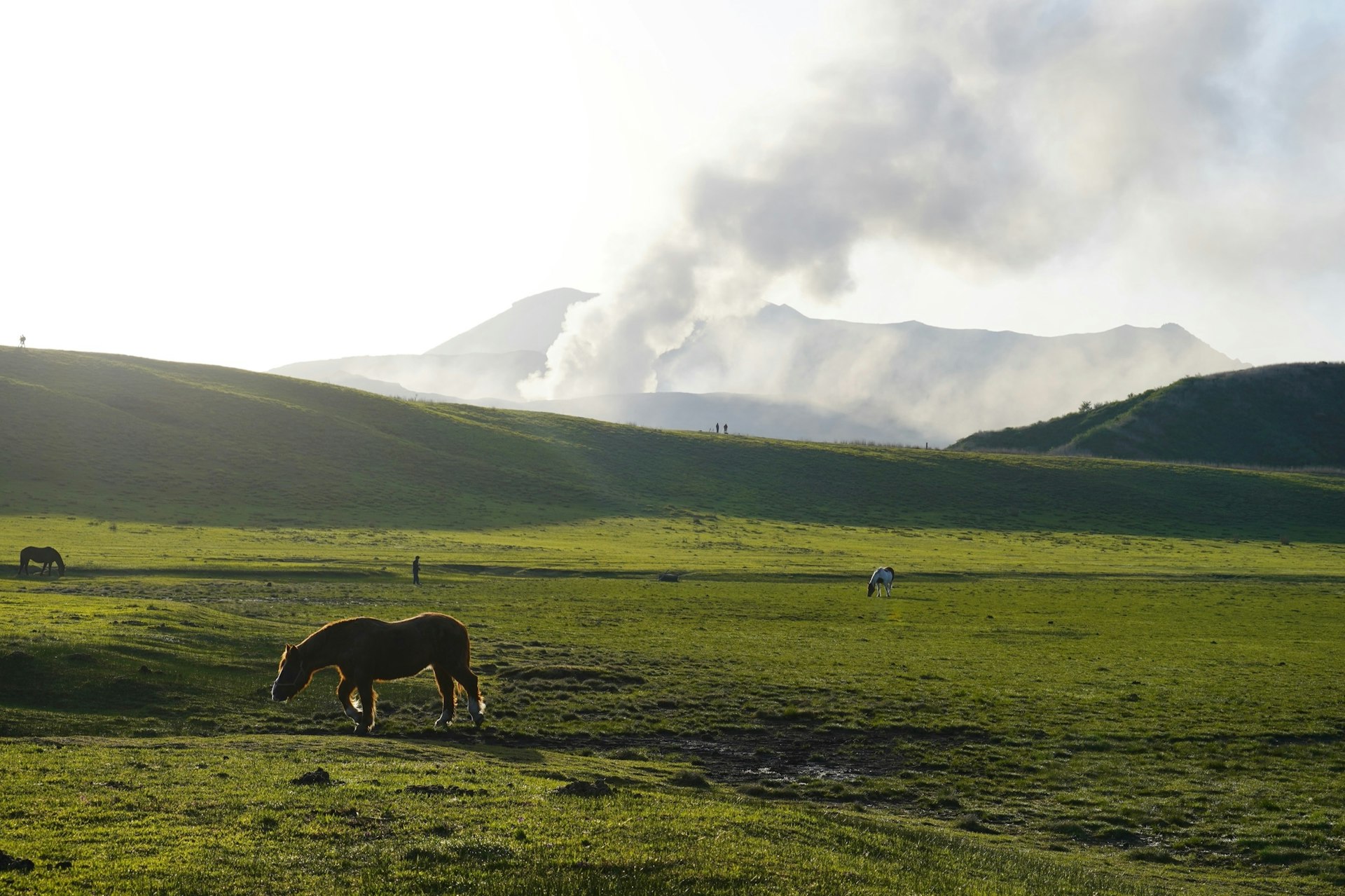
Mt. Aso and its caldera
Stretching 18km east-to-west and 25km north-to-south, the Mt. Aso caldera is one of the world’s largest. It resulted from the mega-eruption of several volcanoes in the center of the island of Kyushu between 270,000 and 90,000 years ago, the force of which scattered ash and rock fragments across thousands of kilometers (about 10 cm. of ash from this eruption have been found in far-away Hokkaido).
The impact of that ancient eruption can still be seen across Kyushu today, but especially in Kumamoto Prefecture, home to the caldera created when the volcano collapsed in on itself from the force of the eruption.
The Aso range is still active, and the summit is frequently off-limits. But if you visit, don’t worry – the volcano’s activity is closely monitored and the surrounding safety zone is regularly adjusted to allow you to get the closest possible look without undue danger.
From the Aso Volcano Museum, it is often possible to see massive clouds billowing from Mt. Aso’s Nakadake Crater, not quite three kilometers away. On most days, the clouds emitting from the volcano are white – predominately steam produced by the heat of the volcano. But in October 2021 the volcano had a more significant eruption, shooting gray clouds of ash some 3.5km into the air.
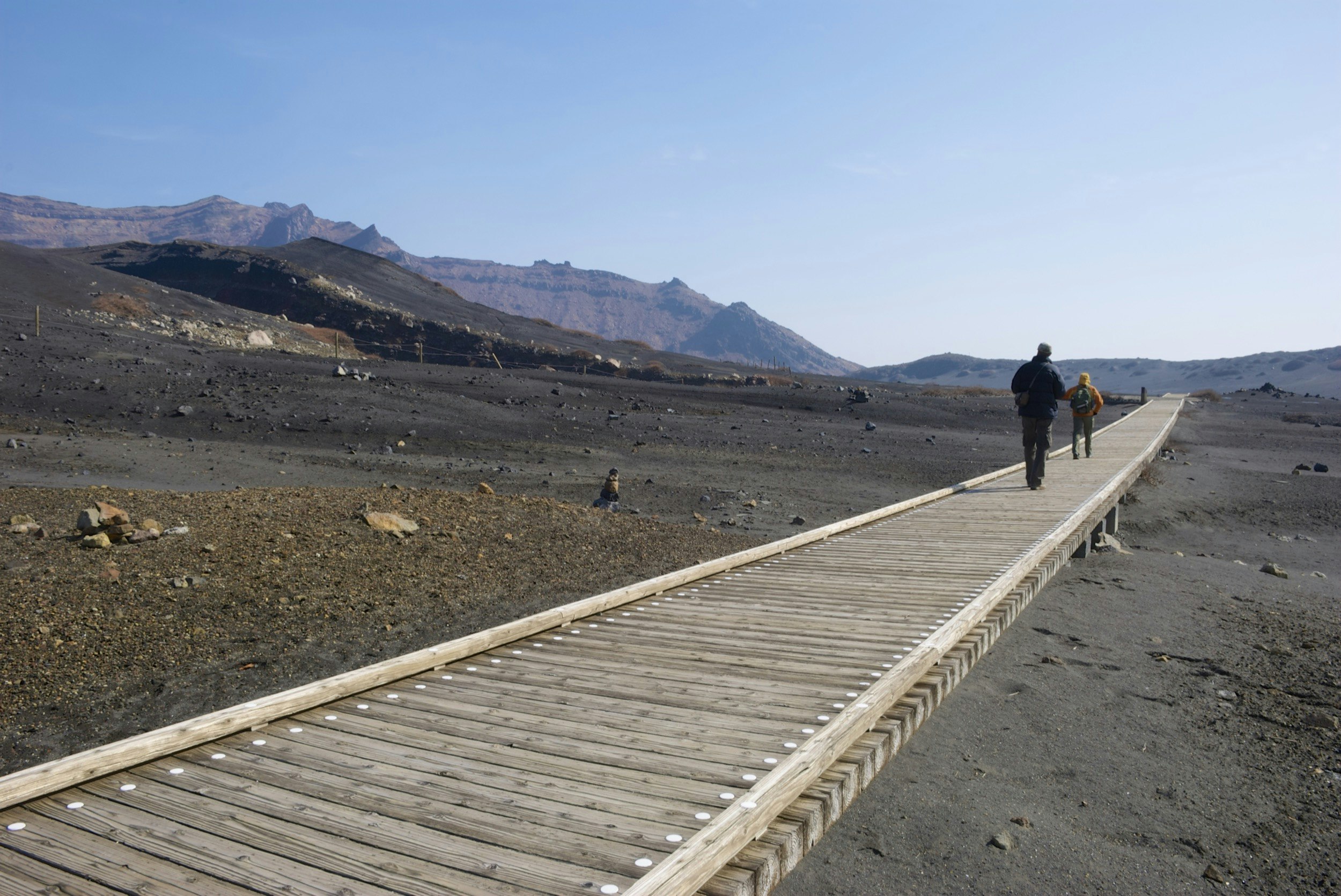
Aso UNESCO global geopark
Because of its distinctive geology, the area has been designated a UNESCO Global Geopark. The best way to begin your immersion into the geology of the area and its distinctive ecosystems is to visit the Aso Volcano Museum. Then, when you’re ready to explore, take a self-guided tour in and around the caldera to see and experience the geological features left behind by Aso’s four major ancient eruptions. Trained geo-guides are also available for personalized tours.
From Daikanbo, a viewing spot on the north rim, visitors enjoy expansive views across the caldera to the volcanic peaks that have developed over the hundreds of thousands of years since the caldera’s creation. Locals say the line of these peaks, including currently steaming Nakadake, have the appearance of a reclining Buddha. Cattle graze on the grassy flanks of the volcanic peaks – the area is famous for its tender, tasty Akaushi beef.
Water
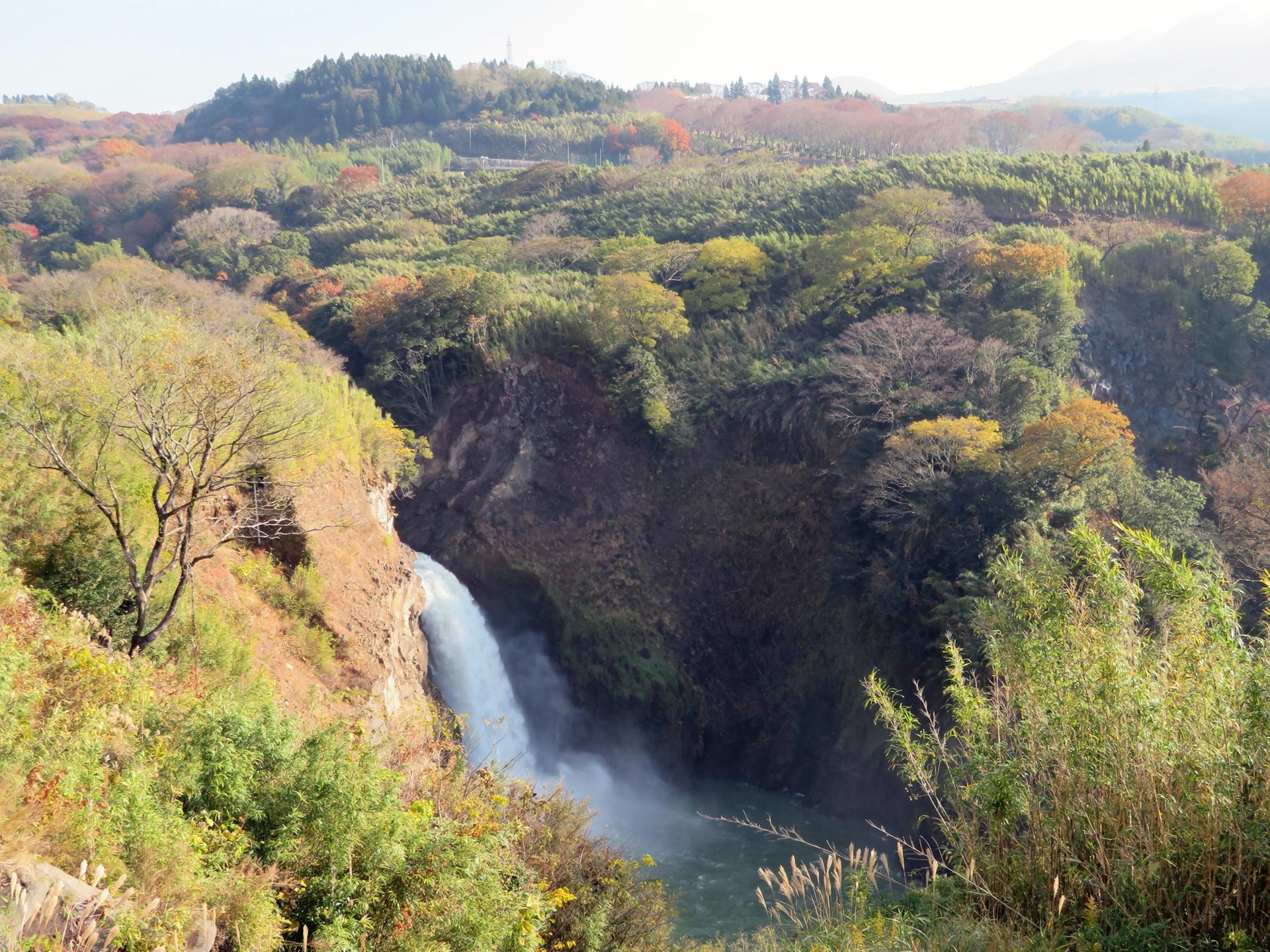
Impacted by the Volcano
Water is a key feature of Mt. Aso’s volcano. The caldera is known to have been a lake at least three times in the last 90,000 years, which explains its flat floor, now covered with fields and home to the town of Aso.
On the west side of the caldera, a fault line has created a fissure through which the ancient lakes ultimately drained out. It’s here you’ll find Sugaru Falls, the gushing outlet for the caldera’s rivers, which tumbles 60m down. The name Sugaru means “several deer washed away” – legend says the god Takeiwatatsu kicked open this fissure so rice could be cultivated on the caldera floor, but the water poured out with such unexpected force that it took several animals with it.
This same fault line was the source of the once-in-a-century earthquake that struck Kumamoto in April 2016. The magnitude 7 quake caused landslides and destroyed roads, bridges and buildings. It also claimed the romon tower gate (a listed historic structure) and main hall of Aso Shrine inside the caldera – one of the oldest shrines in Japan and said to be home to Takeiwatatsu.
Reconstruction is ongoing. Although many bridges and roads – and even Aso Shrine’s main hall – have already been repaired or replaced, the surrounding hillsides will bear the scars of landslides for decades to come.
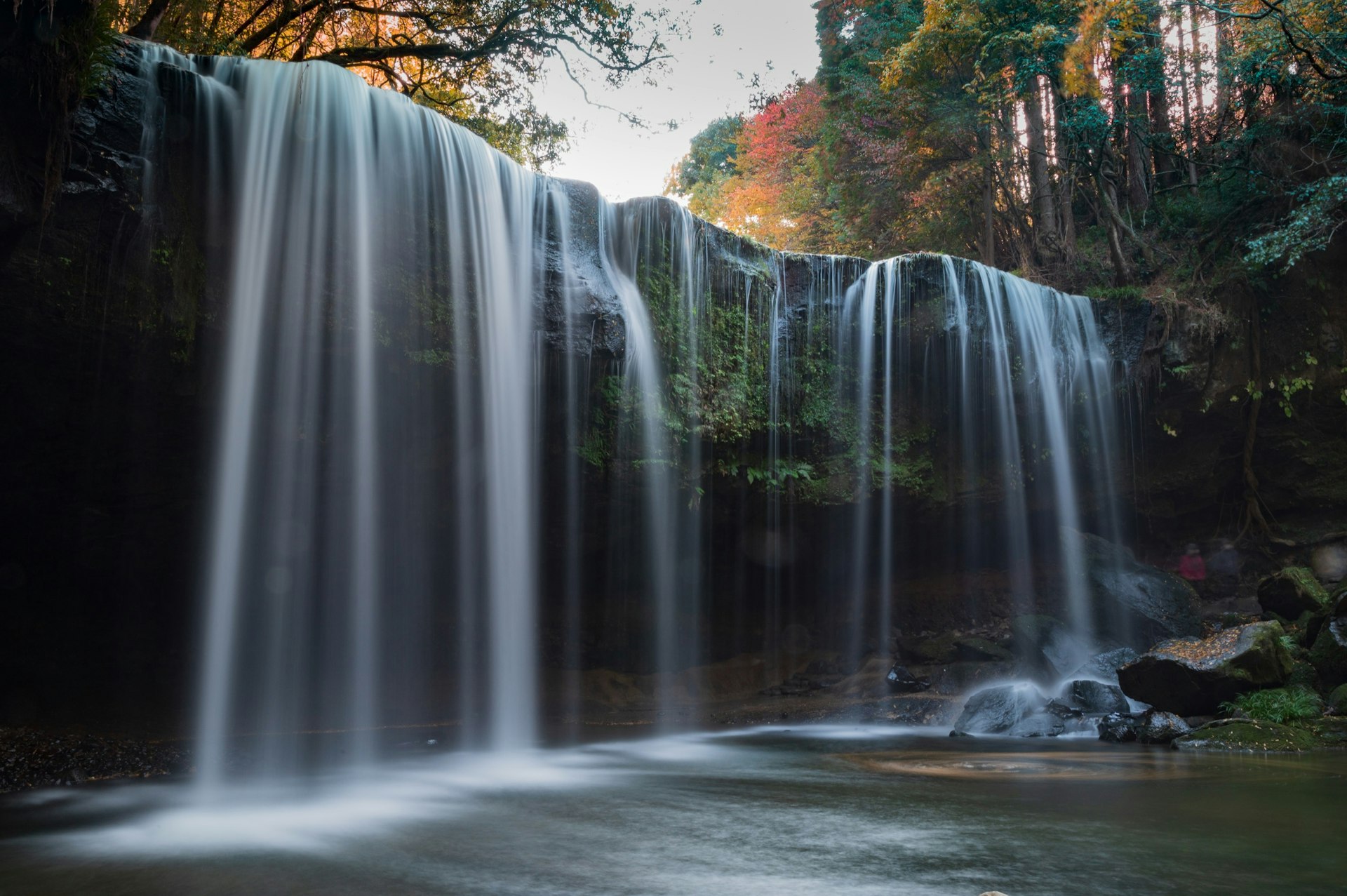
The Waterfalls of Oguni
To the north of the caldera are sweeping grasslands, farms and the town of Oguni, all sitting atop 90,000 year-old pyroclastic flow. Check out the two must-see waterfalls in this area, Nabegataki Falls and Shimonjo Falls, both the result of rock formations left behind by ancient lava flows.
Nabegataki Falls is a 20-meter-wide sheet of water pouring 10 meters over the hard rock remnant of lava flow. Beneath the hard rock is a softer layer of ancient river sediment that is slowly eroding away, creating a hollow behind the falling water. Rockhounds may want to poke around the riverbank and pick up a piece of obsidian or two – ancient peoples used to chip these stones to make knives and arrowheads.
Nearby is Shimonjo Falls, a narrow stream of water plunging 30 meters into a deep crevice, its sheer walls showing basalt columns resulting from the way the lava cooled. Above is Nabekama Falls, a series of rapids that have eroded the hard riverbed into unusual potholes.
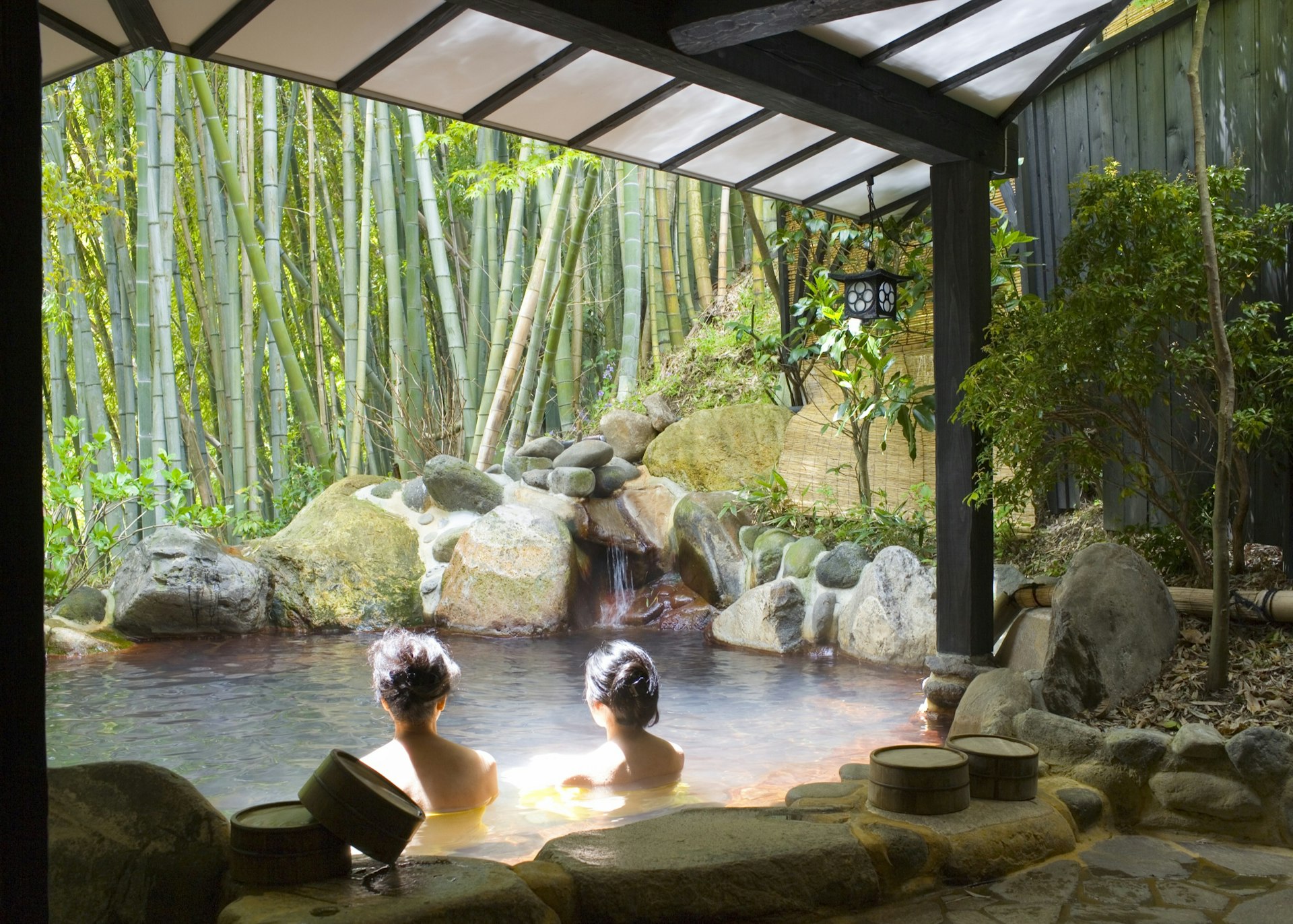
Relaxing at an Onsen
Wherever there’s destruction, though, you can often find rejuvenation – and this is particularly true of the Mt. Aso caldera.
The ongoing volcanic activity provides an abundance of onsens (hot springs) both inside the caldera and around its rim. One of several small villages famous for its onsens is Kurokawa, just a short drive from Nabegataki and Shimonjo Falls. Nestled in a deep river valley, this picturesque village is dominated by traditional inns (called ryokan), each with their own onsen baths. Centuries ago, feudal lords traveling between Kumamoto or Nagasaki and Edo (modern-day Tokyo) would make a point of breaking their journey in Kurokawa to enjoy these baths.
Some ryokan have multiple baths, including riverside outdoor baths (known as rotemburo) and even one inside a cave.
There are so many different onsen sources in the valley, each with different mineral content, that one popular activity for visitors is onsen-hopping. For 1,300 yen (about $12 USD) visitors can buy a special pass that permits entry to any three of 28 participating onsen baths. Wandering the narrow laneways of the village, it is not unusual to see people wearing cotton yukata provided by their hotels and carrying small bags containing towels and toiletries as they move from bath to bath. Their presence contributes to the relaxed atmosphere of this idyllic setting.
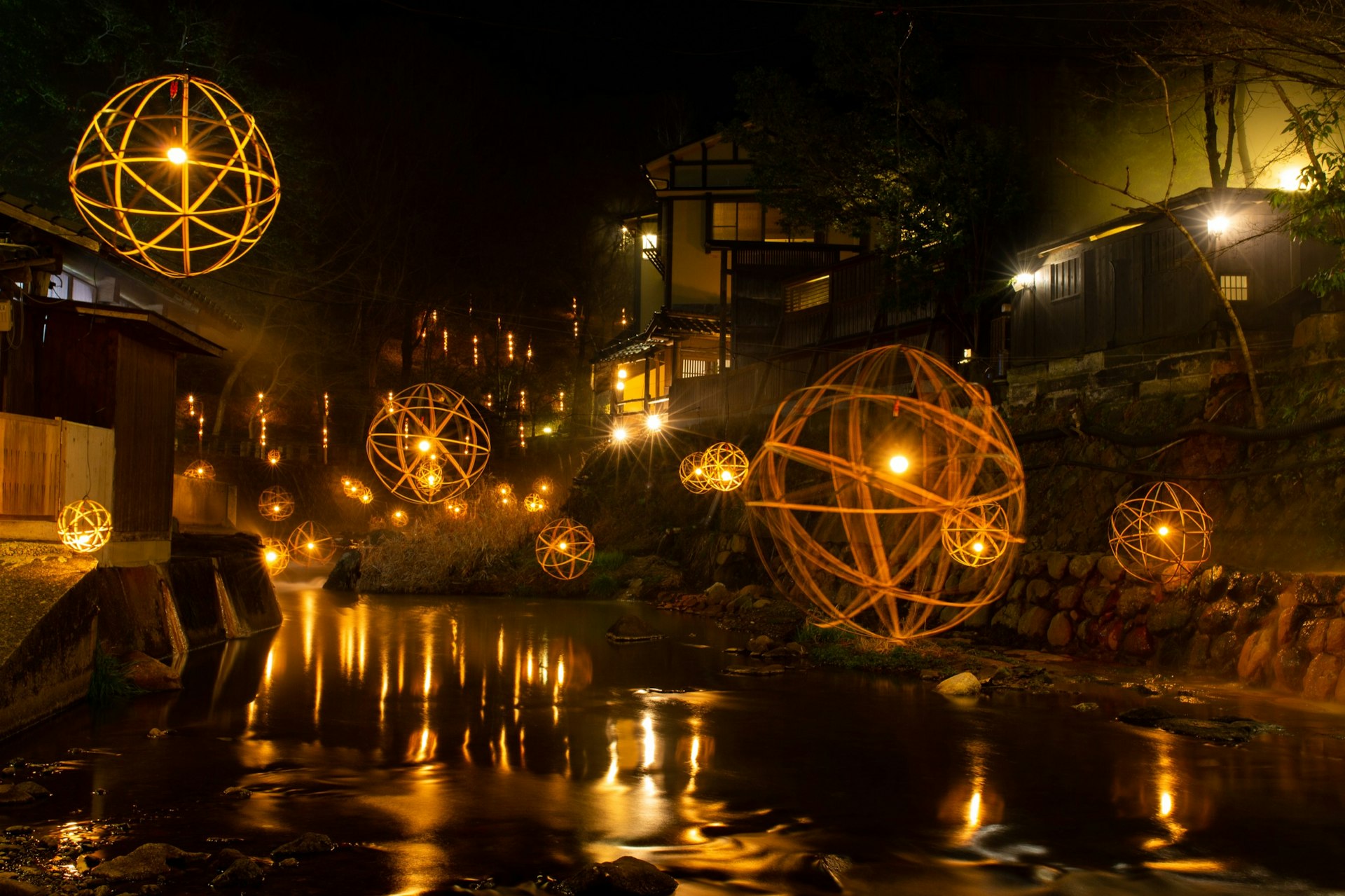
An overnight stay at a Kurokawa ryokan is a treat. You’ll be served sumptuous evening and morning meals featuring local ingredients and specialties and be generally pampered by friendly staff. Most ryokan can accommodate special dietary requirements with advance notice.
As a volcanic island chain, there are many places in Japan where visitors can enjoy onsen baths, but few are in the shadow of a still-active volcano like Mt. Aso. It’s the perfect place to truly appreciate the impact of fire and water – the elemental forces that continue to shape life on this epic island.
You might also like
Kumamoto City: the perfect base for cultural experiences on Kyushu
